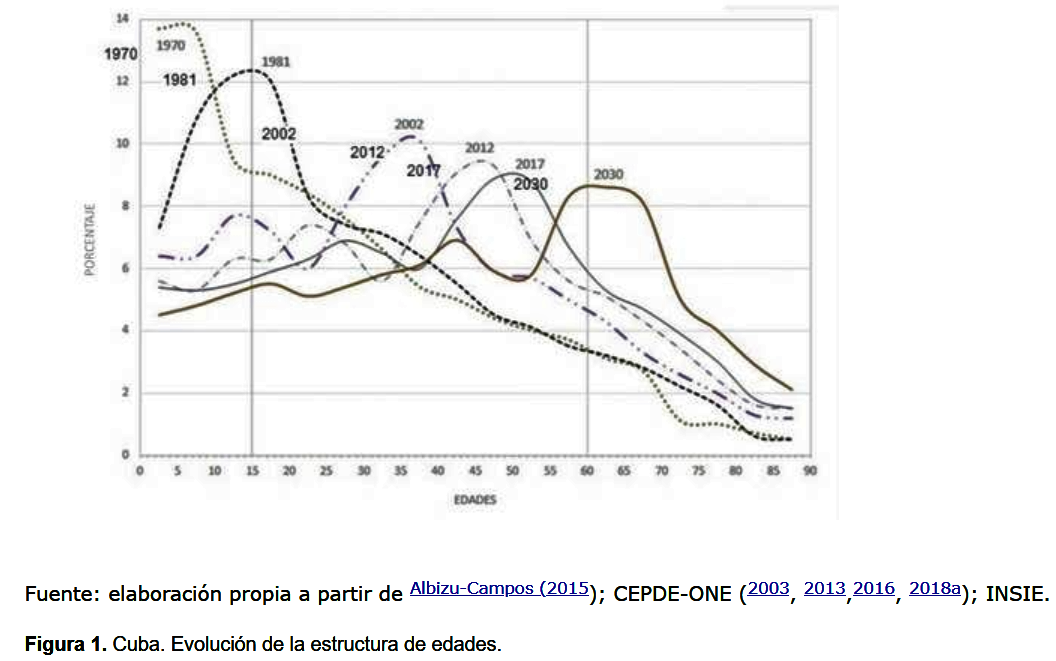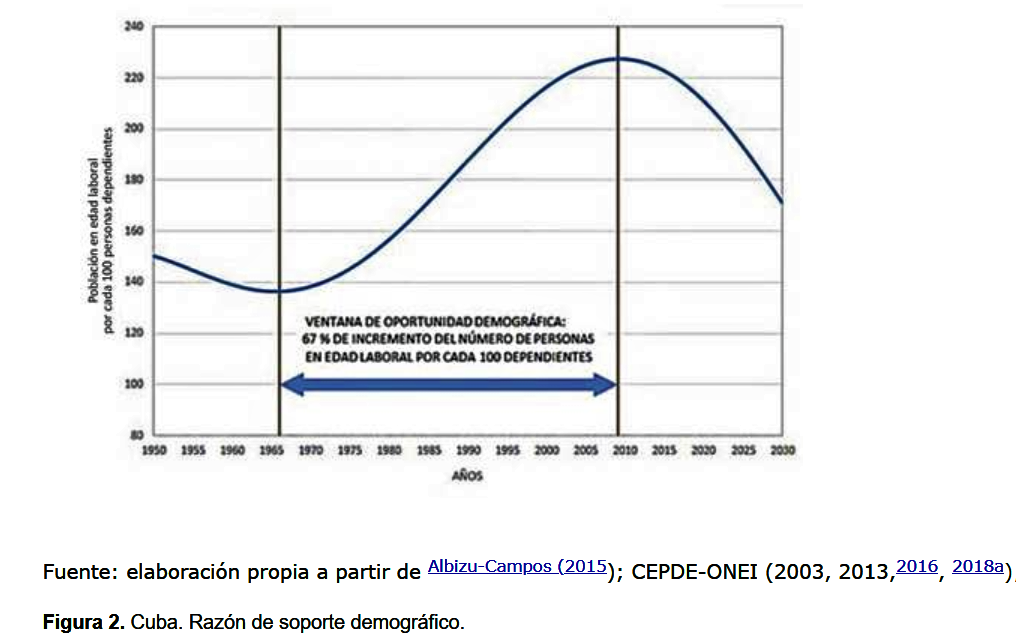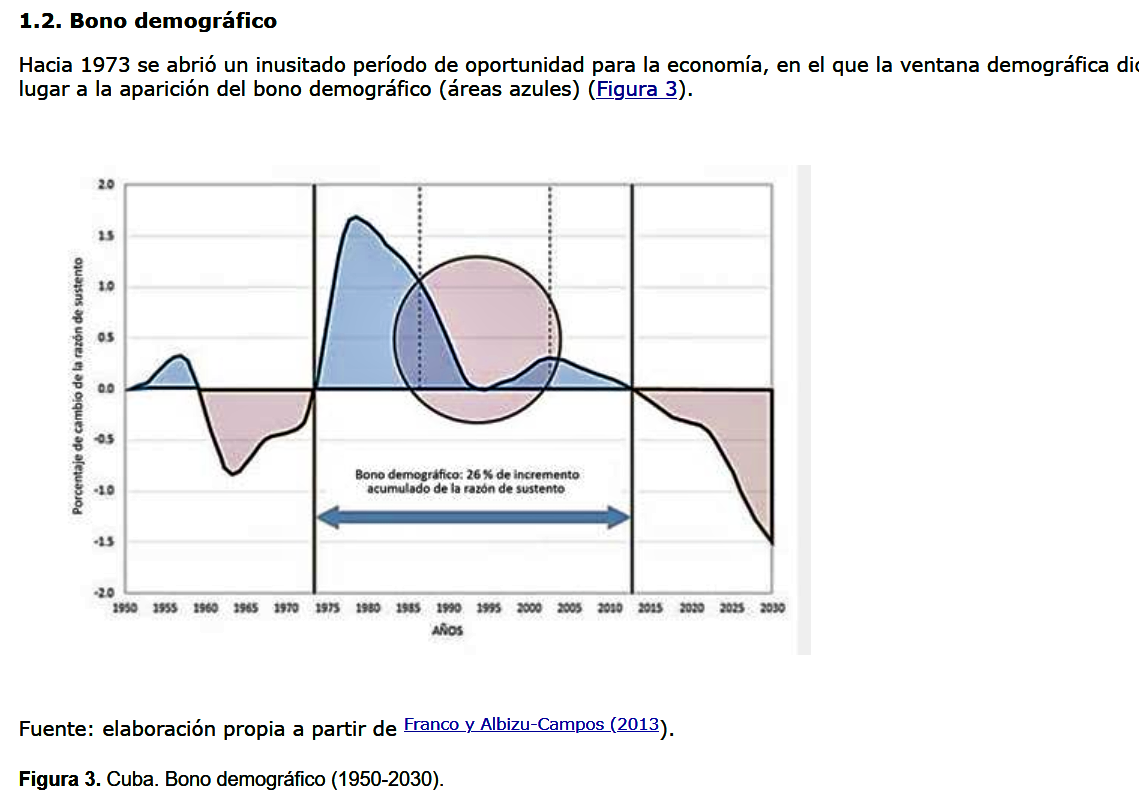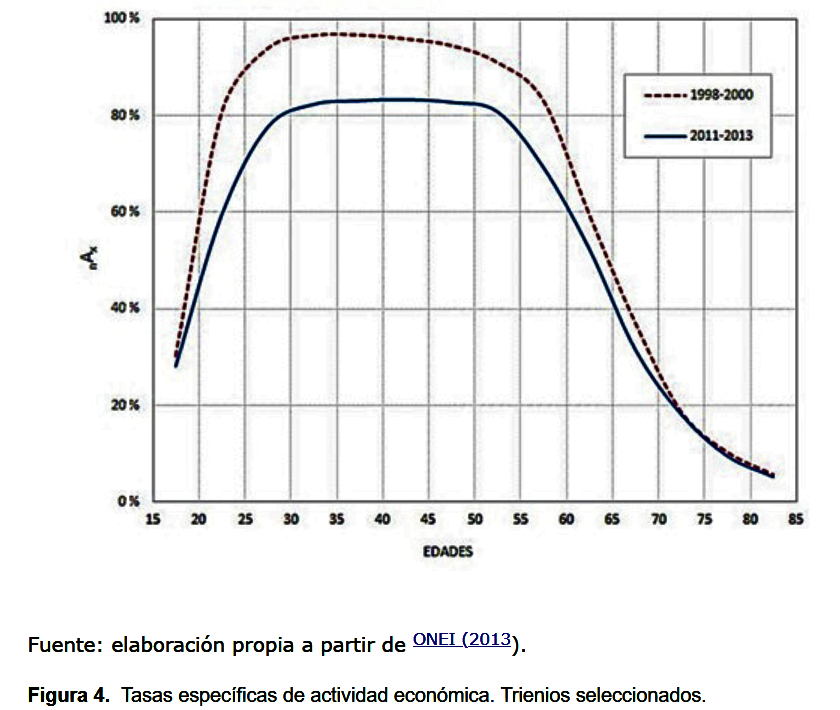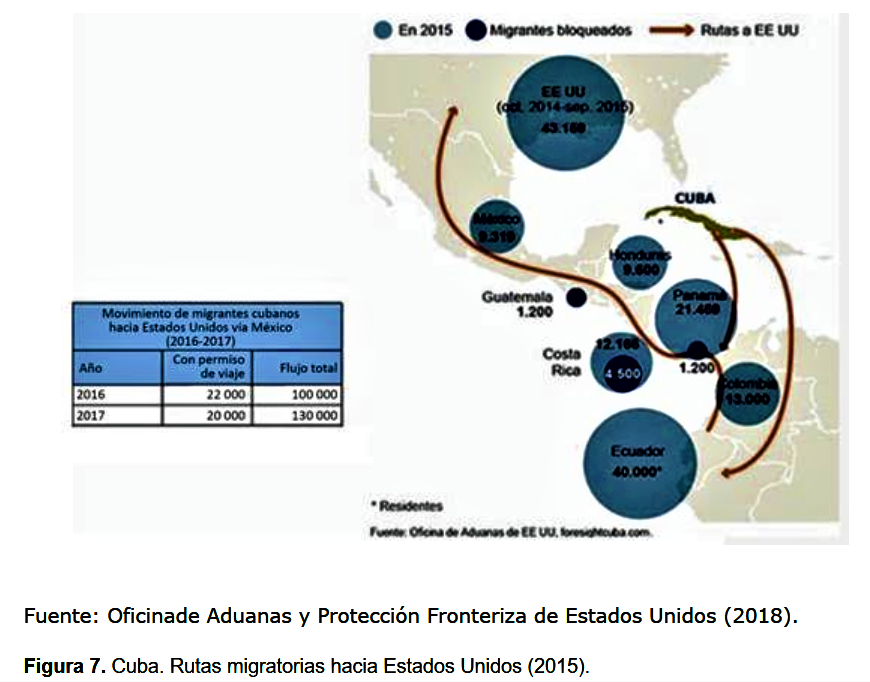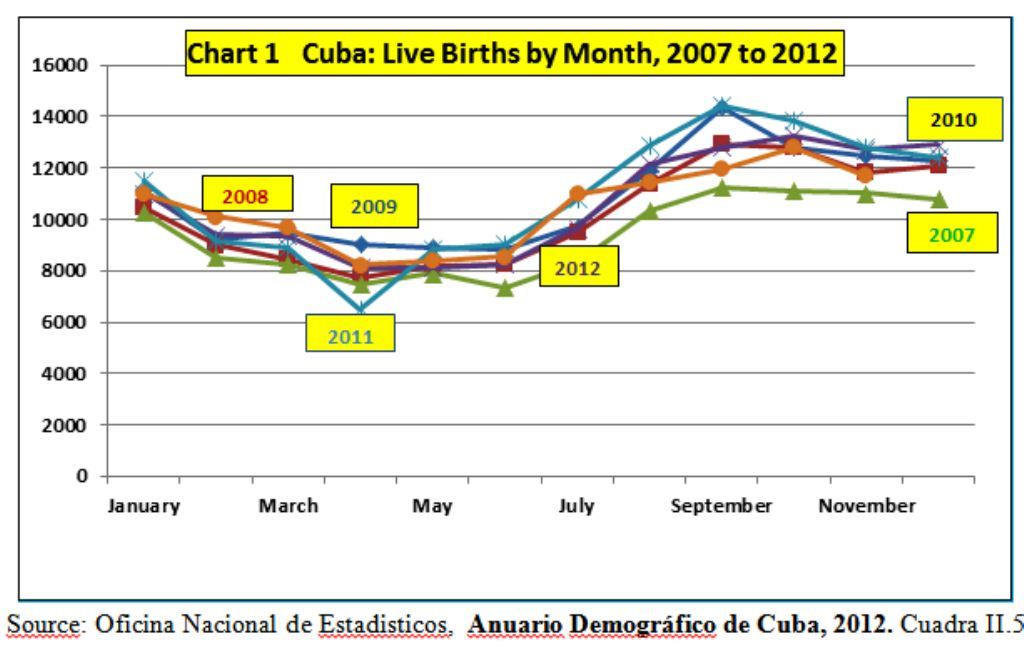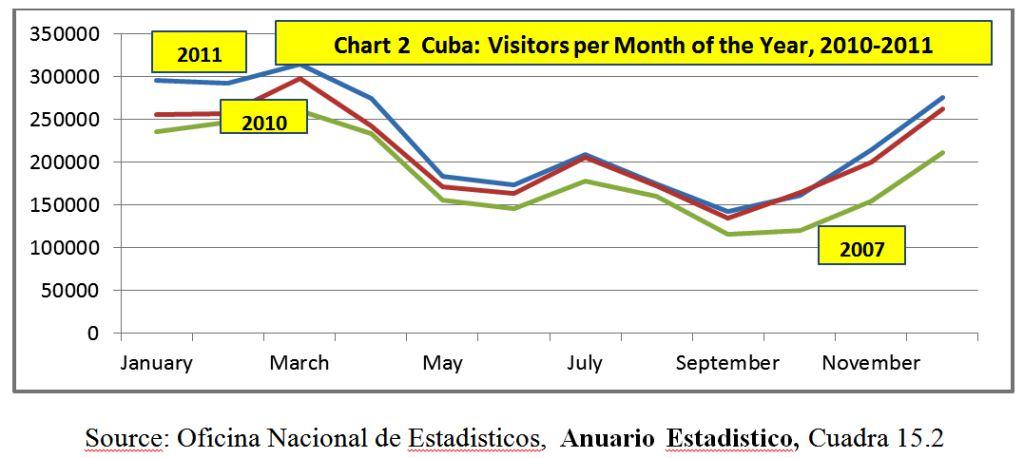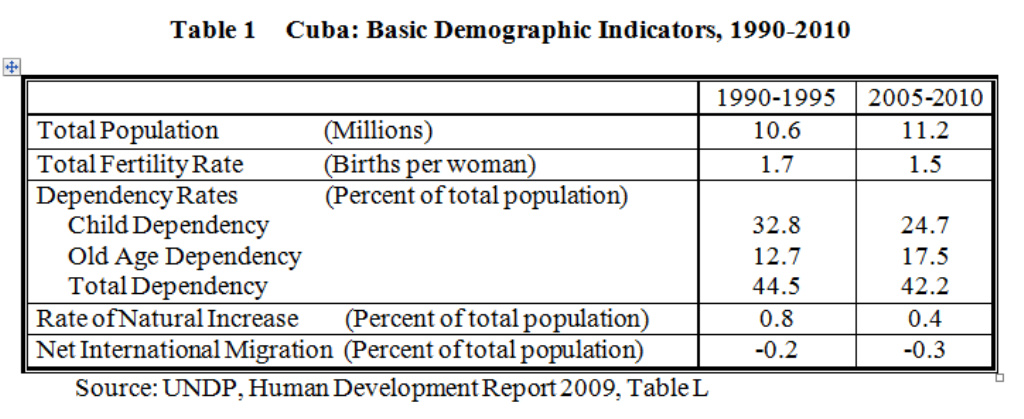Econ. y Desarrollo, vol.164 no.2 La Habana Jul.-dic. 2020 Epub 31-Jul-2020
Juan Carlos Albizu-Campos Espiñeira, Centro de Estudios de la Economía Cubana (CEEC), Universidad de La Habana, Cuba.
Artículo Original: Cuba: envejecimiento demográfico y desarrollo humano
An excellent demographic analysis of Cuba’s aging population and its socio-economic impacts, also using a range of novel graphics to summarize demographic phenomena\ and data.
RESUMEN
El artículo analiza el estado del proceso de envejecimiento demográfico en Cuba y su impacto en la estructura de edades de la población, así como el efecto que ha producido sobre la disponibilidad de recursos laborales el bono demográfico y el bono de género e igualmente aborda las causas que llevaron a la extinción de ese primer bono demográfico. El texto finaliza con una propuesta de política integral de población enfocada hacia el alcance de objetivos explícitos de desarrollo humano.
Palabras clave: bono de género; bono demográfico; envejecimiento demográfico; recursos laborales
ABSTRACT
The article analyses the state of the demographic ageing process in Cuba and its impact on the age structure of the population, as well as the effect it has had on the availability of labour resources the demographic bonus and the gender bonus, and also addresses the causes that led to the extinction of this first demographic bonus. The text ends with a proposal for a comprehensive population policy focused on achieving explicit human development objectives.
Keywords: gender bonus; demographic bonus; demographic ageing; labour resources
INTRODUCCIÓN
La comprensión de la dinámica demográfica cubana actual pasa necesariamente por la explicación de cada uno de sus componentes, en estrecha interrelación con la población y el desarrollo. El debate en torno a la fecundidad y su evolución, a la variabilidad de las migraciones o a la convergencia de perfiles epidemiológicos que inciden sobre los niveles de mortalidad determina hoy posicionamientos también desde la política. Es una excelente oportunidad de diálogo ciencia-política, de forma tal que la primera aporte insumos y recomendaciones al modo en que se trazan e implementan acciones y a su vez a las posibilidades de monitoreo sistemático a los procesos.
El contexto social, económico y político actual abre una oportunidad al binomio ciencia-política en esta y en otras ramas del conocimiento. En el campo de la demografía de lo que se trata es entonces de contribuir a posicionar las características de su dinámica y desde el contexto de lo que expone la política hoy proponer ajustes e inclusiones en su concepción.
Artículo Original: Cuba: envejecimiento demográfico y desarrollo humano
CONCLUSIONES
Lo hasta aquí expuesto muestra que no existe escasez alguna de fuerza de trabajo en el país y que la solución no sería en ningún caso el facilismo de la visión simplista del pronatalismo. Es decisivo que se abandone la percepción de que el desarrollo humano es solo el mejoramiento de la extensión de la esperanza de vida al nacer y de las condiciones educacionales de la población. Es inexorable la adopción de una visión en la que el mejoramiento de las condiciones de vida y de la calidad de la supervivencia ocupen un lugar central, en el que el mejoramiento de los salarios, en particular, y de los ingresos, en general, de la población, ocupen ese lugar central que necesitan entre los objetivos de la política.
En todo caso, y como se muestra en la Tabla 2, el país lograría un puntaje en el índice global de 0,844, algo superior a la cota máxima, 0,823, alcanzada en 2007 cuando se ocupó el puesto 57. Cuba se situaría entonces en el lugar 44 del ranking de países que conforman la franja de muy alto desarrollo humano, junto a Chile, que ocupa hoy ese puesto, Argentina (47), Uruguay (56) y Barbados (58) que son, en la región, los que lo han logrado y se han consolidado en esa franja. Nótese además que lo que se propone es retornar a valores de los índices en las distintas dimensiones de desarrollo humano que fueran conseguidos por nuestro país en el pasado reciente y ahora serían las metas que, en un lapso de 12 años, hacia 2030, se proponen como objetivos de política bajo este enfoque; y para ello el crecimiento económico es imperioso. No más una posibilidad ni un lujo intelectual. Sin los recursos que aporta el crecimiento sostenido de la economía, es poco probable evitar que se siga retrocediendo en materia de desarrollo humano.
Cuando eso suceda, ya se verá que aquello que percibimos hoy como necesidades de la población de Cuba habrá desaparecido en buena medida y habrá sido sustituido a su vez por otras demandas. Pero, eso sí, el envejecimiento demográfico, el decrecimiento del número de habitantes, la fractura ideológica que representa la desvalorización del trabajo (manifestada a través del casi millón y medio de personas con edades entre 15 y 59 años aptas y calificadas que ni siquiera se plantean la búsqueda de un empleo formal y sí la búsqueda de un canal migratorio de salida), el casi un cuarto de la población urbana que tiene ingresos por debajo del valor de la canasta básica (en un contexto en el que el salario medio representa apenas un tercio de la línea de pobreza), así como muchos otros rasgos que hoy causan tanto desasosiego dejarán de ser percibidos como «problemas de población» -que en realidad no son tales- y quién sabe, quizás hasta pueda Cuba convertirse en un espacio de atracción y se detengan los éxodos. Ese es el verdadero reto desde la perspectiva del desarrollo humano. He ahí una verdadera política de población.


